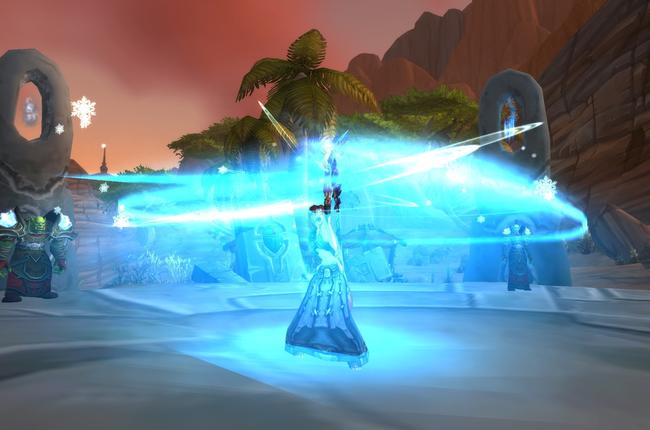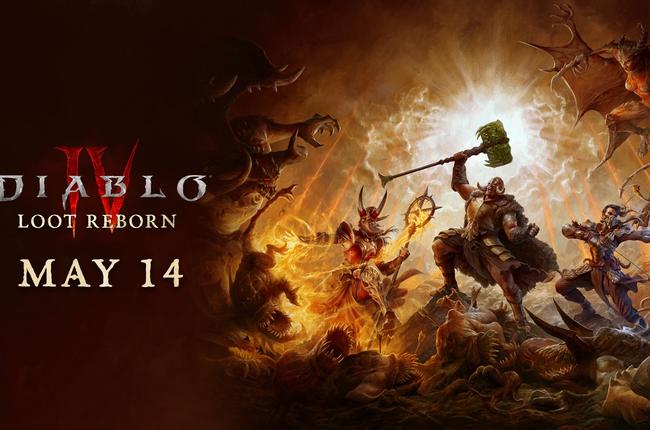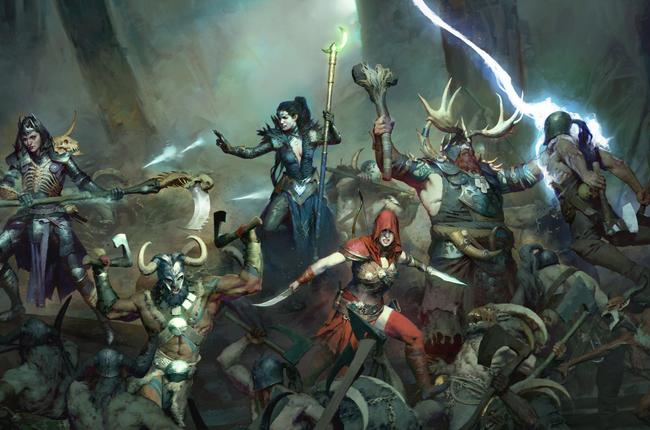Reflecting on Frost Mage in Dragonflight & War Within - Editorial

With the sun setting on Dragonflight and The War Within on the horizon, Frost Mage Writer, Dorovon, offers a retrospective highlighting Frost's journey in Dragonflight and shares their hopes for the spec's next evolution with a War Within Wishlist.
Frost Retrospective & War Within Wishlist
Frost Mages, as well as Mages in general, have had quite the journey through Dragonflight. The initial Dragonflight talent tree at the start of the expansion brought with it many new spells and carried forward a number of effects from the Shadowlands systems. Some of these effects were popular and positively received, while others carried forward some problematic designs. Mages saw a huge rework in 10.1.5, which brought largely positive change and added further strengths to the class. Overall, Mage has become much more fun to play throughout Dragonflight and I look forward to seeing what lies in store for us in The War Within.
Mage Talent Tree
One of the biggest highlights for Mages in general in Dragonflight has been the class talent tree. The tree includes many powerful utility and defensive options that make Mage into an extremely useful and survivable member of any group, especially in dungeons.
A few of my favorite new utility talents are Blast Wave with Volatile Detonation and Energized Barriers. Knockbacks and grips are extremely important forms of crowd control and in the past Mages just had to watch other classes handle them and hope everything went well. With Blast Wave and Volatile Detonation, Mages now have their own strong knockback to contribute in these situations and can even vary the distance of the knockback for when targets do not need to be knocked as far.
Energized Barriers is great because stuns, roots, and snares are some of the most common forms of crowd control in the game. Mages already have the option to take Blinkto get out of stuns and roots, but prior to Dragonflight had to resort to Ice Block to break snares. It also isn't uncommon for snares to do more than just slow you, which makes this all the more useful.
My only real disappointment in the current tree is the Reduplication/Reabsorption choice node. Both of these options are generally weak because incoming damage is either not direct resulting in none of the images dissipating, or the images are directly killed by having threat on enemies. Even when these effects do trigger, they are generally not even very noticeable. A good start to making this node more useful would be to add a way to more reliably or manually trigger the effects. There are other nodes that aren't particularly popular like Mass Polymorph, but frankly Mass Polymorph is just a fun spell even though it is so situational that it rarely sees use.
The 10.1.5 Rework
In 10.1.5, the Mage rework included massive improvements to the class tree. Some highlights include the removal of Rune of Power and the addition of some powerful new defensive cooldowns with Ice Cold and Mass Barrier. Mass Invisibility is also a very interesting new piece of situational utility for Mages, but unfortunately it shares a choice node with Mass Barrier. Because Mass Barrier is so good, Mass Invisibility rarely sees use.
Rune of Power was a controversial talent in every iteration of it that ever existed, but the final version was especially problematic because it was further empowered by any cooldown reduction that applied to Arcane Surge, Combustion, and Icy Veins. With how the talent had played out in its last few years, it was definitely the right call and a welcome change to have it removed it from the game no matter how iconic it had become to the class.
Ice Block has always been the iconic defensive cooldown for Mages, but it has a huge downside: you are stunned while Ice Block is active and cannot do anything until you cancel it. Ice Cold negates this weakness by giving Mages a powerful defensive that is off the GCD and requires no downtime at all. It does not provide an immunity, but it is still enough to survive almost everything you would normally use Ice Block for. Additionally, it is important to note that a major weakness of Mages has always been their complete lack of self-healing. Using Ice Cold with Cryo-Freeze alleviates this weakness and can allow surviving in situations that would have been difficult or impossible before.
Mass Barrier was the biggest surprise of the Mage rework and is one of the rare cases of Mages having a utility spell that affects other people in their group. This spell is especially potent in dungeons where it can be used to help any member of the group survive a hit that would otherwise kill them. Additionally, while intended as a tool for groups, this spell is still quite useful alone. It has a separate cooldown from Ice Barrier, providing an extra personal defensive cooldown to use, and also applies Ice Barrier to your Mirror Images if no players in range. This is extremely useful for soloing tough elites and rares that will normally kill your Mirror Images very quickly.
Temporal Warp and Time Anomaly
Temporal Warp and Time Anomaly fill a choice node and act as the central capstone of the Mage class tree. This node is controversial both in terms of how it affects choices throughout the talent tree as well as its gameplay. This node is one of the only nodes in the entire tree that affects damage, and is the only damage node that imposes significant constraints on choices within the tree. Because it provides damage, it is generally considered mandatory to select, which means that the Mage has to select nodes leading to it. This often results in skipping Displacement because pathing through Flow of Time does not allow access to the other capstones.
In terms of the gameplay of Temporal Warp and Time Anomaly, Temporal Warp is typically the stronger option when Bloodlust usage for the rest of the group does not prevent the Mage from using Temporal Warp when they want to or when damage in a short time frame is important. Time Anomaly is an alternative choice for when Bloodlust usage is particularly constraining. In practice, both choices have problems that lead to a lot of frustration for many Mage players.
Time Anomaly is not popular because the multiple layers of randomness lead to a very inconsistent experience: first a Time Anomaly proc needs to randomly occur and whether that proc provides Time Warp, Icy Veins, or Fingers of Frost is another random choice. Regardless of how the talent performs statistically over a lot of time, getting a proc when you aren't going to do anything with it is disappointing.
Temporal Warp on the other hand is extremely powerful, but can be frustrating to use for multiple reasons.Its usage is constrained by when your group wants Bloodlust. You cannot use Time Warp to trigger Temporal Warp if your group has not yet used Bloodlust and if you are the only source of Bloodlust in your group you also cannot use Time Warp such that you wouldn't have it ready when your group wants to use Bloodlust.
Sometimes, it is optimal to use Time Warp and Temporal Warp at the same time either due to fight timings or because damage in a very short window is important. This is problematic because the huge amount of haste can mean the cast time of some spells falls under the minimum GCD of 750 ms. For Frost, this is especially easy to do with Winter's Blessing and Icy Veins where Frostbolt's cast time becomes too short. This causes a Flurry queued after the Frostbolt to not reach the target first, which is somewhat frustrating because experienced Frost players really want to make use of the free stack of Winter's Chill provided before the last bolt of Flurry hits the target.
It is not uncommon to accidentally stack Temporal Warp with Bloodlust when you don't want to because you are trying to cast Time Warp for your group, but someone else casts Bloodlust first. This can be especially annoying for Frost because you often do not want to use both at the same time due to the haste issues mentioned above.
Given all of the issues that come up with this node, it would probably be better to simply remove it and instead add a new defensive or utility capstone at the bottom of the tree. Some options for this include Cauterize, Cold Snap, and Mass Invisibility. As I mentioned earlier, one of the issues with Mass Invisibility is that it has to directly compete with Mass Barrier, which is generally much more desirable.
Frost Talent Tree
Major Problems Before the 10.1.5 Rework
For many years prior to Dragonflight, the Frost specialization struggled in terms of design thanks mostly to Mastery: Icicles and Ice Lance. Mastery: Icicles did not interact well with some core rotational spells like Ice Lance, which typically meant that Frost fell into either avoiding the stat as much as possible to focus on Ice Lance damage or stacking as much of it as possible and minimizing the number of Ice Lance casts, sometimes reaching points where Ice Lance would not be cast at all. With the release of Dragonflight, Frost Mages gained the Hailstone talent, which contributed significantly to resolving this longstanding issue. Unfortunately, it was still often better to avoid spending Fingers of Frost procs and instead only use Ice Lance after Flurry, as that would increase the number of Icicles that would benefit from Shatter thanks to Winter's Chill. Talents like Deep Shatter further contributed to this as an option because the remaining stacks of Winter's Chill could be used with Frostbolt instead of Ice Lance. Additionally, there was another problem that arose in early Dragonflight thanks to Mastery: Icicles. Specifically, any active talents like Ray of Frost and Comet Storm that did not interact with Mastery: Icicles were difficult to justify using. This problem even extended to talents that did have some interaction like Glacial Spike, since the time spent casting Glacial Spike was inefficient because it was time not spent generating more Icicles. Because of this issue, Frost Mage fell into a meta without any of these active talents.
Current Frost Tree
With the 10.1.5 rework, all of the above problems have mostly gone away. Mastery: Icicles now directly increases the damage of the active talents that were previously not viable, Icy Veins is now a lower uptime but very impactful cooldown, some other rarely used talents had improvements made to make them more compelling choices, and some brand new talents like Winter's Blessing and Coldest Snap were added. Overall, the rework was done very well and Frost currently has some of the best core design it has had in many years, or perhaps ever.
Thanks to the rework, active talents like Glacial Spike, Ray of Frost, and Comet Storm are now the dominant choices. This is a refreshing change of pace where deciding how to sequence these spells can feel almost overwhelming at first when in the past they would see little to no use, especially not all at once. If there is a complaint with the rework, it is how locked in the specialization tree is right now. There are some different choices that are made based on the situation: particularly Coldest Snap/Freezing Rain/Ice Caller for AoE and Ray of Frost/Cryopathy for single target, but most of the points will never move. However, talents being locked in to some extent is not a new phenomena in this game and being locked into a well-designed set of talents is not a bad place to be.
The three talent nodes that currently stand out as weak both numerically and in terms of design are Snowstorm, Fractured Frost, and Cold Front. Originally in Dragonflight, Snowstorm was an excellent talent that brought Cone of Cold into the damage rotation when it had been a utility-only spell for an eternity. However, Coldest Snap just does that even better and Snowstorm unfortunately does not interact well with Coldest Snap. The cooldown of Coldest Snap does not line up well with the rate at which Snowstorm stacks are gained and the damage provided by Snowstorm hits before Winter's Chill is applied by Coldest Snap, requiring a separate freeze if you want Snowstorm to also benefit from Shatter. While some tuning changes could save Snowstorm, Fractured Frost and Cold Front are in a much more concerning place where it is a good thing that they are weak: if they must stay in the tree, I would prefer that they are weak. The design goal of these talents seems to be to encourage casting a lot of Frostbolts in AoE situations to trigger Cold Front as much as possible. However, not only does Cold Front trigger in a very awkward way by requiring the Mage to face where they want it to go, but Frost's core AoE rotation that uses Frostbolt as little as possible is more fun than standing still casting Frostbolt over and over. Regardless, I do still wish to emphasize that even though Cold Front is not great, Coldest Snap, Cryopathy, and Glacial Spike already provide a good balance of options at the capstone level of the Frost tree. Fractured Frost and Cold Front simply provide a clear space in the tree to add something new and interesting in the future.
Lastly, I enjoy that the talent tree has a couple of very situational but good nodes with Frostbite and Subzero. Against targets that cannot be frozen like raid bosses, these talents do nothing at all, but one of the unique parts of Frost is that Shatter provides a bonus against targets that can be Frozen. Frostbite and Subzero further power up this unique aspect and can sometimes be potent choices in content like dungeons or PvP when there is a lot of opportunity to make use of them.
Specialization of the Mage Specializations
Arcane, Fire, and Frost all fill similar roles after the Mage rework in 10.1.5. All three specializations have somewhat similar damage profiles focused around Temporal Warp and their major cooldowns. Arcane's burst tends to spike a little higher in short damage windows thanks especially to its superior synergy with Temporal Warp allowing two Bloodlusts at the same time, but it doesn't take a very long window anymore for all three specializations to become close in damage output. Additionally, all three specializations tend to specialize in cleaving off of the priority target with Arcane Barrage/Touch of the Magi, Mastery: Ignite, and Splitting Ice.
While having three similar specializations is not necessarily a bad thing, depending on tuning it can quickly become problematic. Right now in 10.2.5, the tuning of all three Mage specializations is relatively close and the similarity makes it easy to justify playing whatever specialization you prefer in almost all PvE content. However, if tuning ends up lopsided in the future when all of the specializations fill a similar role like this, it becomes much harder to find a situation where specializations with poor tuning are reasonably close numerically to the best option.
Additionally, I think it's great when players feel excited about an encounter or trash pull because of how well it matches their specialization's strengths. A good example of this in the past was fighting The Restless Cabal in Crucible of Storms as a Frost Mage. At the time, Frost Mage (and Mages in general) were relatively weak in raids and were generally only brought for Arcane Intellect. However, Frost's damage profile and strength against 2 targets was excellent for The Restless Cabal and turned it from one of the worst-tuned specs in the game to a very competitive choice for that one fight.
One way to carve out a better niche for each of the specializations would be to tune some of the unique strengths in damage for each specialization so that they stand out more relative to each other. In particular:
- Arcane: Funnel damage from effects like Resonance.
- Fire: Cleave against many nearby targets with Mastery: Ignite or execute damage with Searing Touch and Improved Scorch.
- Frost: Cleave against exactly two targets with Splitting Ice.
Another possibility is to design encounters in a way that plays to the strengths of each specialization, allowing them to shine in their own unique way.
Frost Mage Hero Talents in The War Within
So far, only the names of the Hero Talent trees have been revealed for Mages in The War Within. Frost Mages will have access to the Spellslinger and Frostfire trees, shared with Arcane and Fire, respectively. Meanwhile, Arcane and Fire will share the Sunfury tree. Because we don't yet have access to the full trees, we can only speculate about what they might contain and ponder possible design choices.
Spellslinger
It is difficult to speculate on what exactly will fit into the Spellslinger tree based only on the name and that Arcane and Frost share it. Thematically, the name makes me think of casting a larger number spells than a regular Mage, which does play into the type of cleave that Arcane and Frost Mages have with spells like Arcane Barrage, Mage Arcane 10.2 Class Set 4pc, and Splitting Ice. Additionally, spells like Arcane Missiles, Flurry, and Comet Storm where a single cast can feel like casting multiple spells fit into this theme. Some interesting ideas for the tree could be:
- Enhanced cleave and priority target damage of Arcane Barrage and Splitting Ice.
- Effects that add cleave to additional spells that are normally purely single target like Arcane Blast and Flurry.
- Procs that artificially increase the number of times you "cast" a spell like Concentrated Power for Arcane Explosion or the Multistrike stat that existed in Warlords of Draenor.
Frostfire
While the exact details are yet to be released, the general theme and design that this tree will likely be aiming for is much clearer than it was for Spellslinger. As the name suggests, Frost Mages share this tree with Fire Mages. Because the concept of Frostfire as a Mage is not new, we can look at some examples of how it was handled in the past.
- In Classic, Mages had access to most Fire and Frost spells at all times allowing many opportunities to use spells of the other school. Because Frost Mages did not have access to Ice Lance, Fire Blast was commonly used as an instant spell in Shatter combos.
- In Wrath of the Lich King, Mages had access to Frostfire Bolt, which had a unique visual effect and combined Fireball and Frostbolt in terms of its mechanics. Despite combining the two spells, Frostfire Bolt had some disadvantages such as locking the Mage out of both schools at once if it was interrupted.
- In Cataclysm, Frost Mages had a talent to upgrade Flame Orb into Frostfire Orb.
- In Shadowlands, Mages had the Disciplinary Command Runeforge Legendary effect.
Some of what I hope to see from the Frostfire tree includes:
- Frostfire spells that improve or replace some of the core rotational abilities. Frostfire Bolt is the clearest candidate from old expansions for this, although it may work better as a proc that replaces Frostbolt or Flurry temporarily instead of always replacing Frostbolt.
- A good reason to cast Fire spells as a Frost Mage and Frost spells as a Fire Mage. It is important that any extra spells being used in the rotation feel satisfying to press by interacting with the specialization mechanics instead of just being used for maintenance buffs outside of your core rotation like Disciplinary Command was. For Frost Mage, this would ideally mean ensuring that any relevant Fire spells interact well with core Frost mechanics by helping to trigger procs like Brain Freeze or by interacting well with Shatter. For Fire Mages, any relevant Frost spells could interact with Hot Streak and Mastery: Ignite. Alternatively, the Frostfire tree could include some mechanics borrowed from the other specialization or new mechanics that are interesting for the rotations of both specializations.
- Visual effects that combine Fire and Frost elements to really play up the fantasy of being a Frostfire Mage. In particular, an iconic difference between the Mage specializations right now is the visually distinct barriers: Prismatic Barrier, Blazing Barrier, and Ice Barrier. Adding some extra effects to your barrier when selecting the Frostfire tree would be a fun addition.
About the Author
Dorovon is a Mage theorycrafter in the Altered Time Discord and a SimulationCraft developer. Additionally, he is a current analyst and former raider for BDG's raid progression team and has played all three Mage specializations in the Race to World First.
Now is the time to conquer the content that came with the Guardians of the Dream update! From running Mythic+ dungeons to slaughtering the mighty new bosses of the fresh Amirdrassil raid - all of that and beyond is one click away with WowCarry and its team of pro-players that will carry you through your journey!





